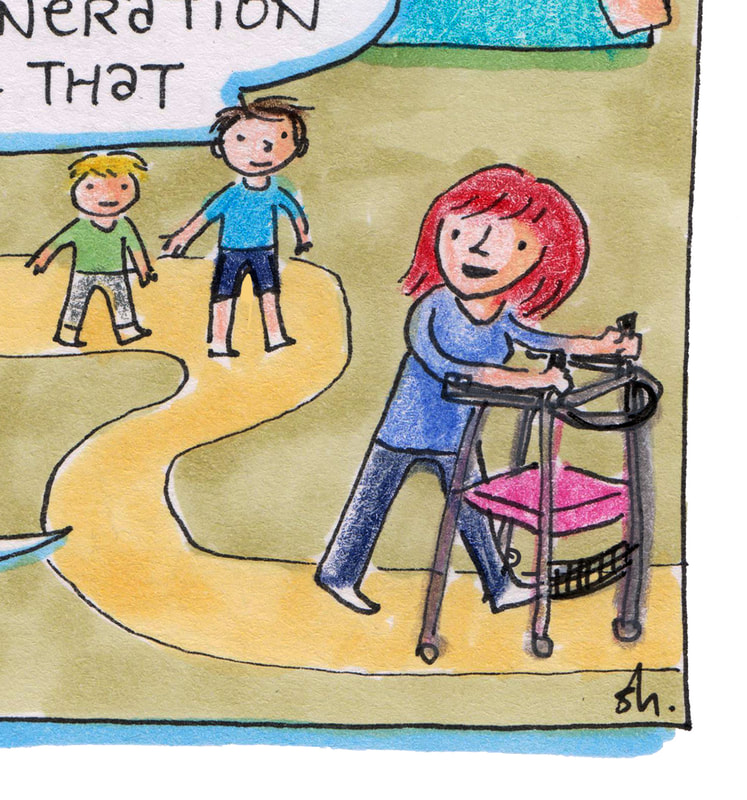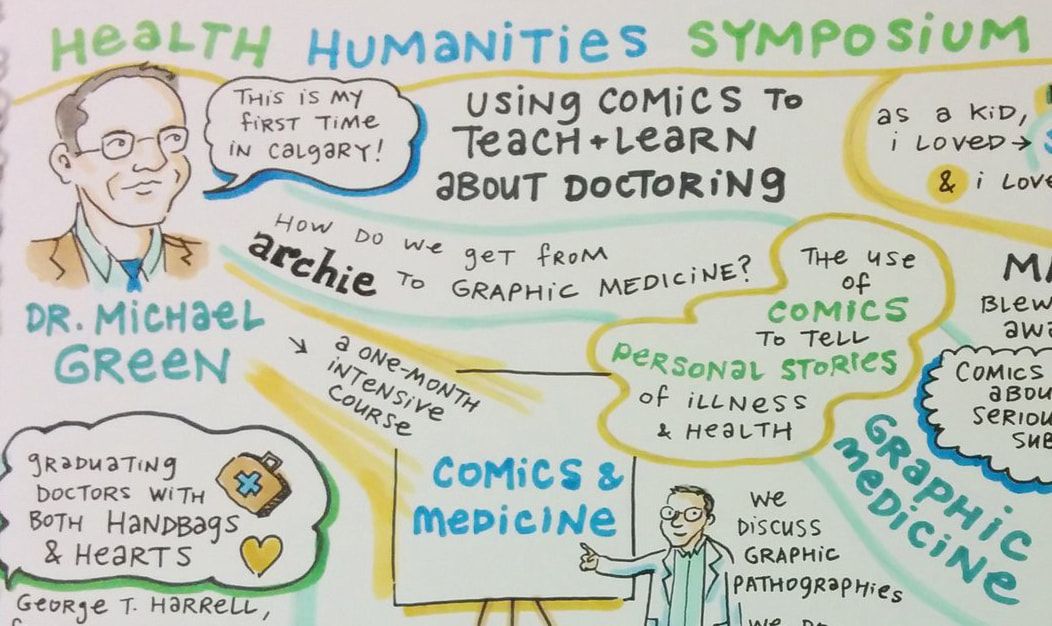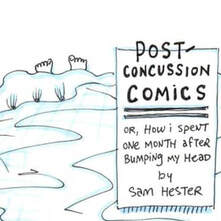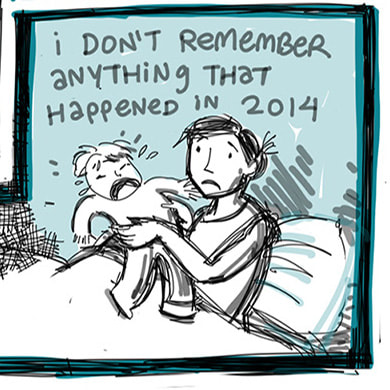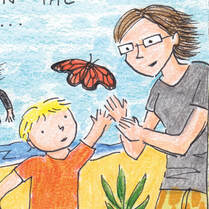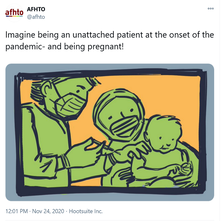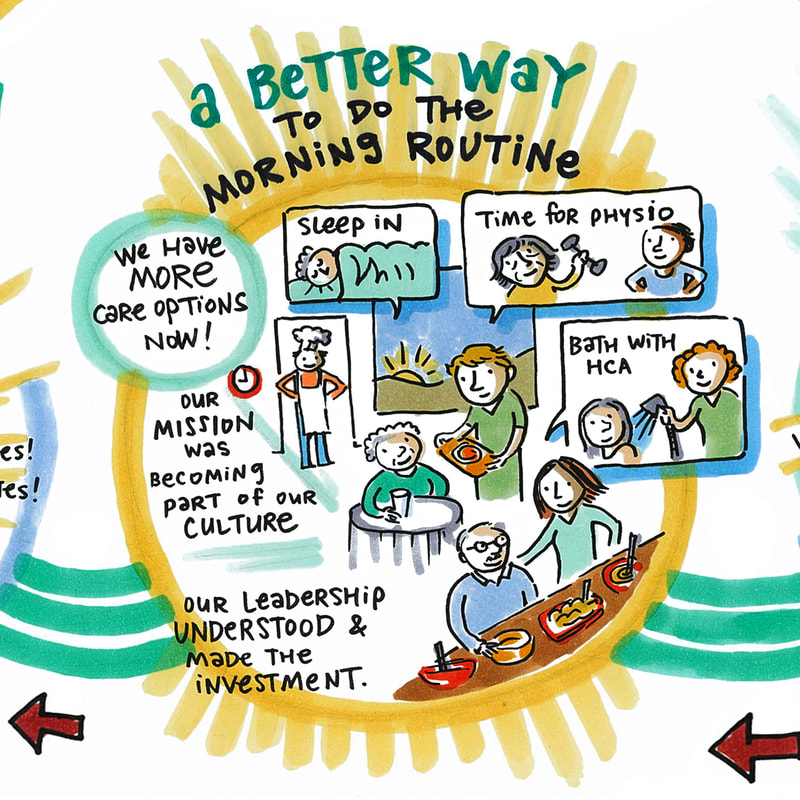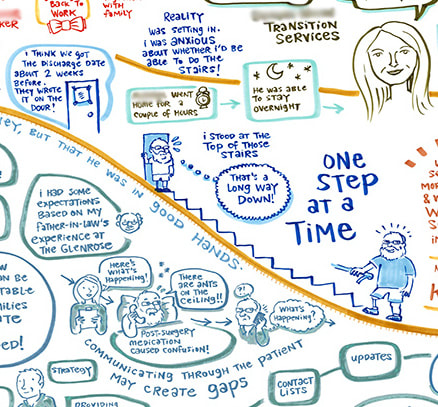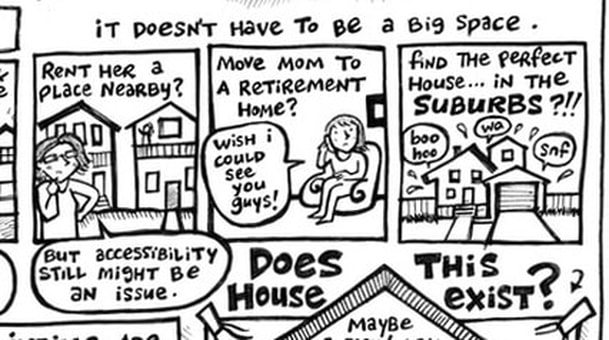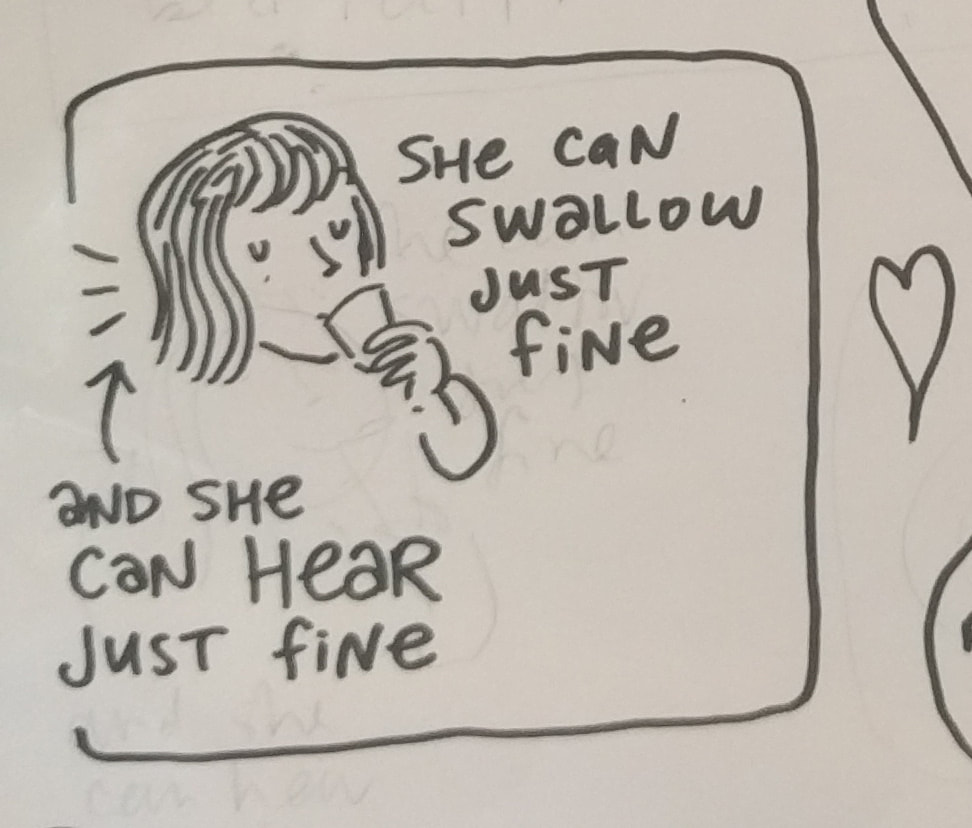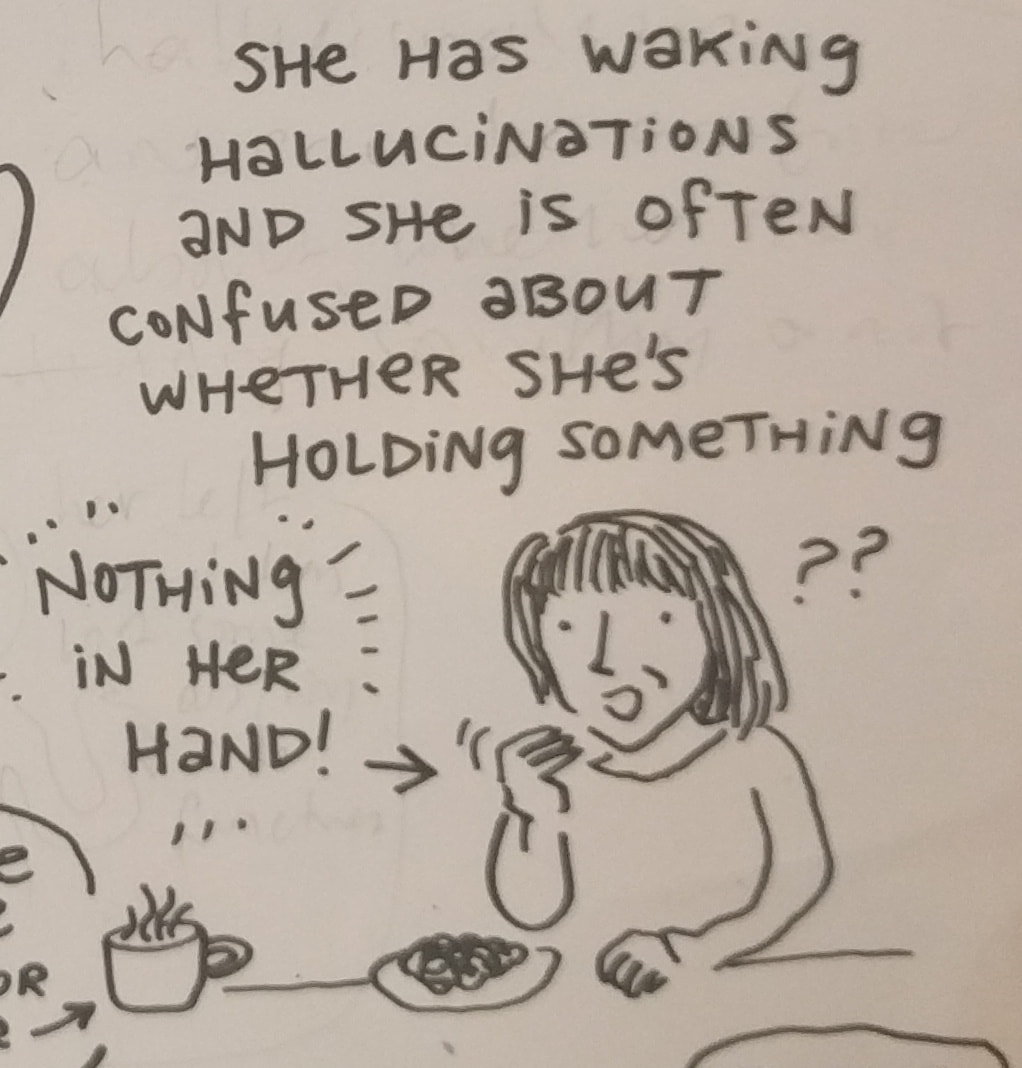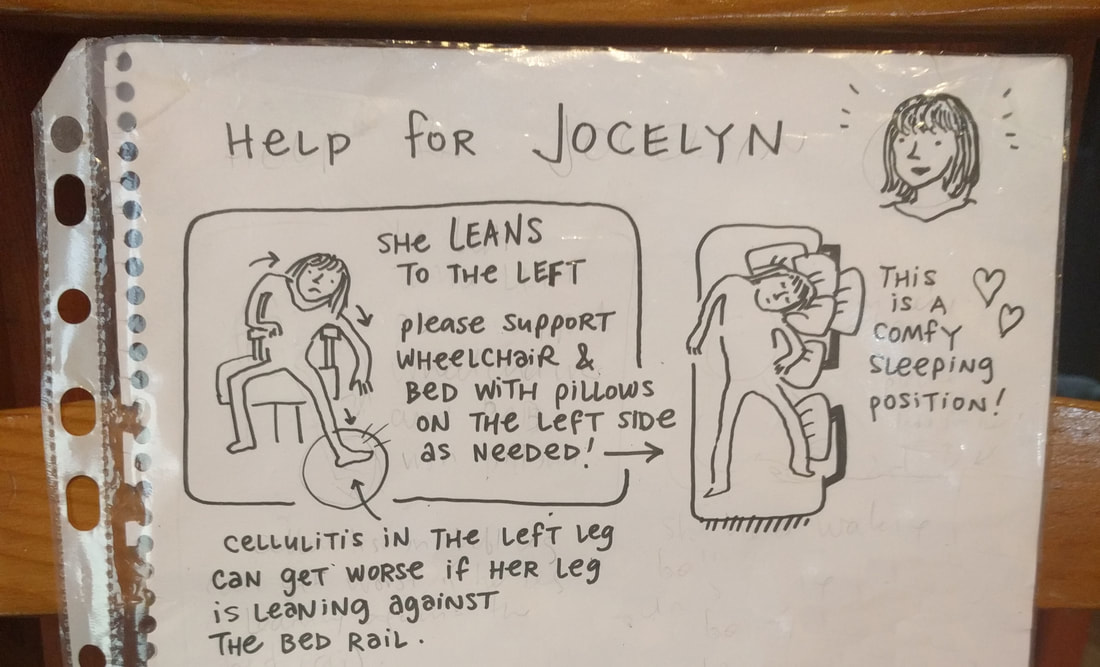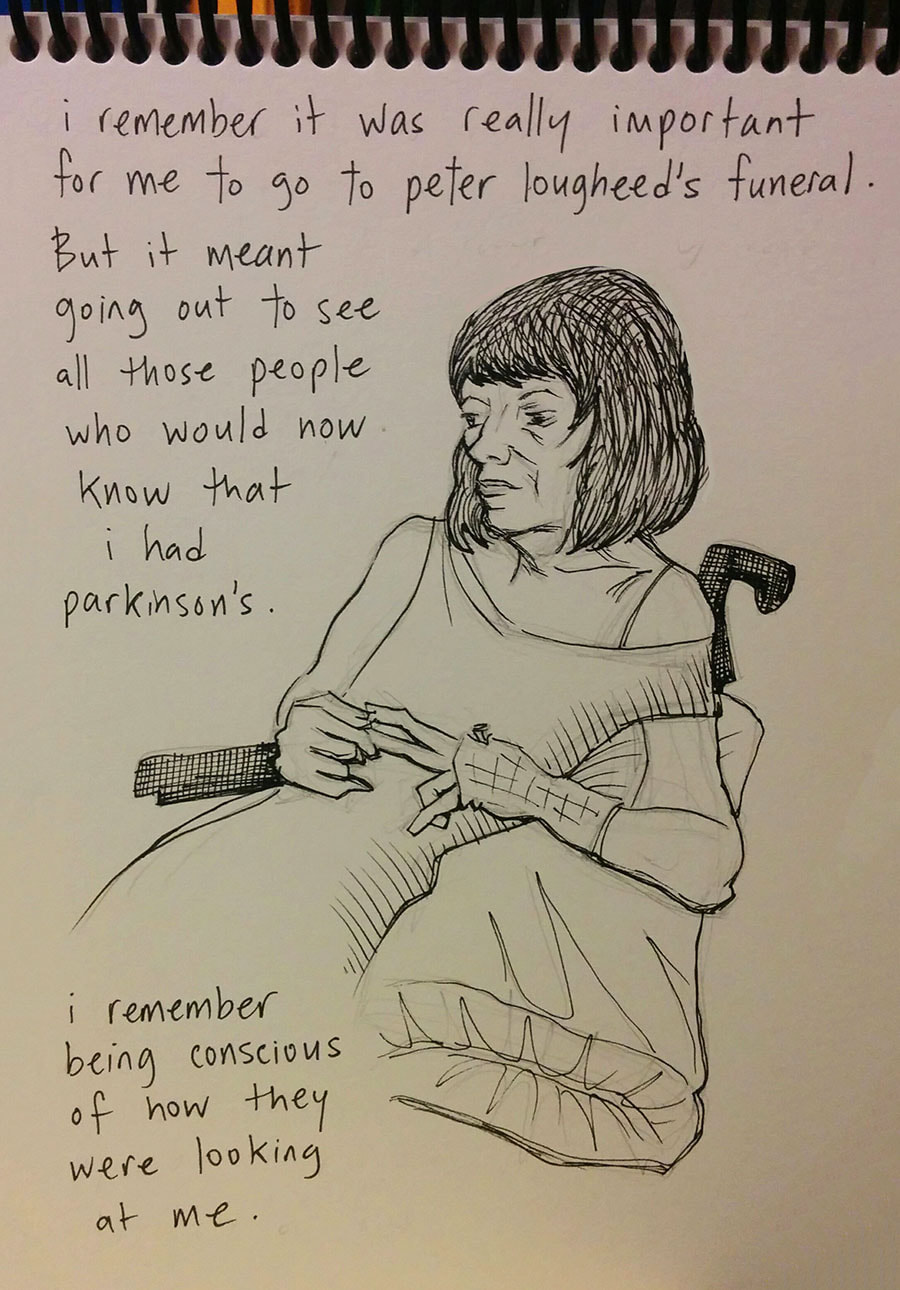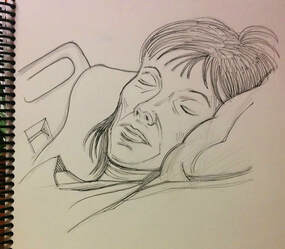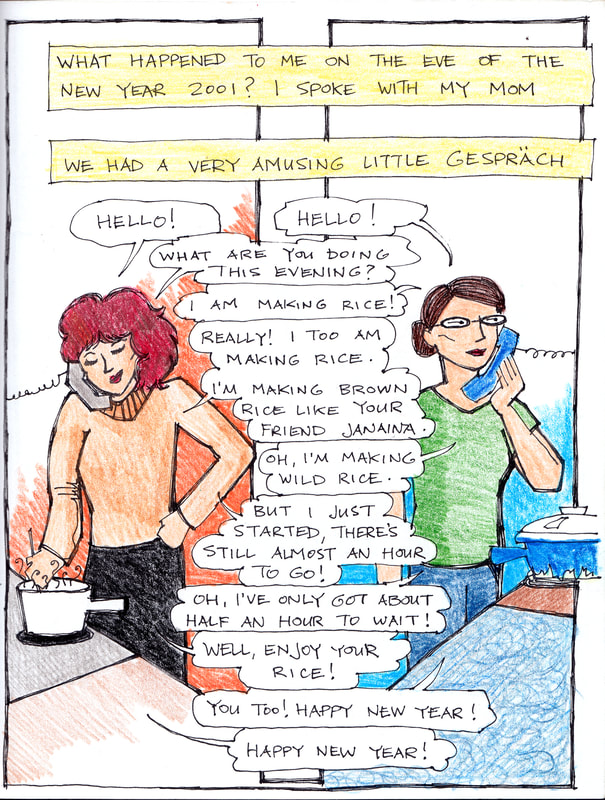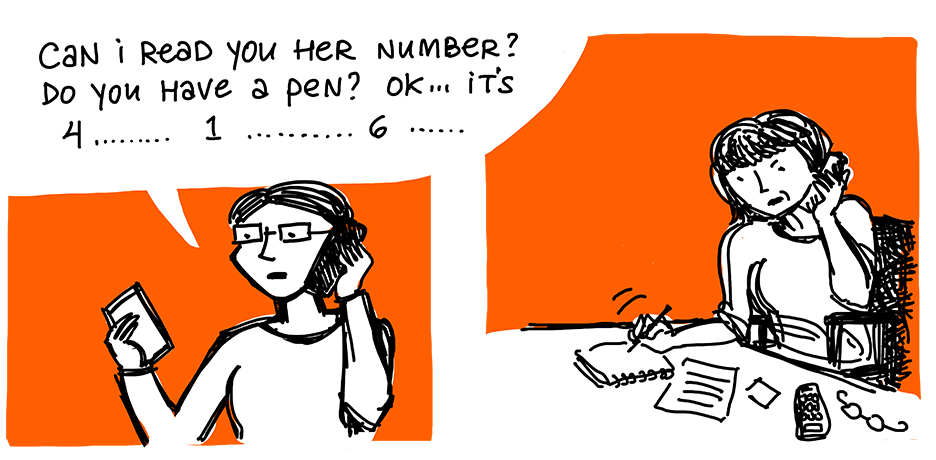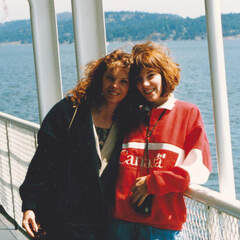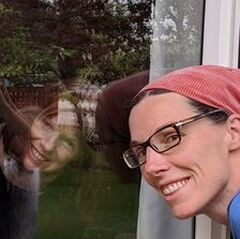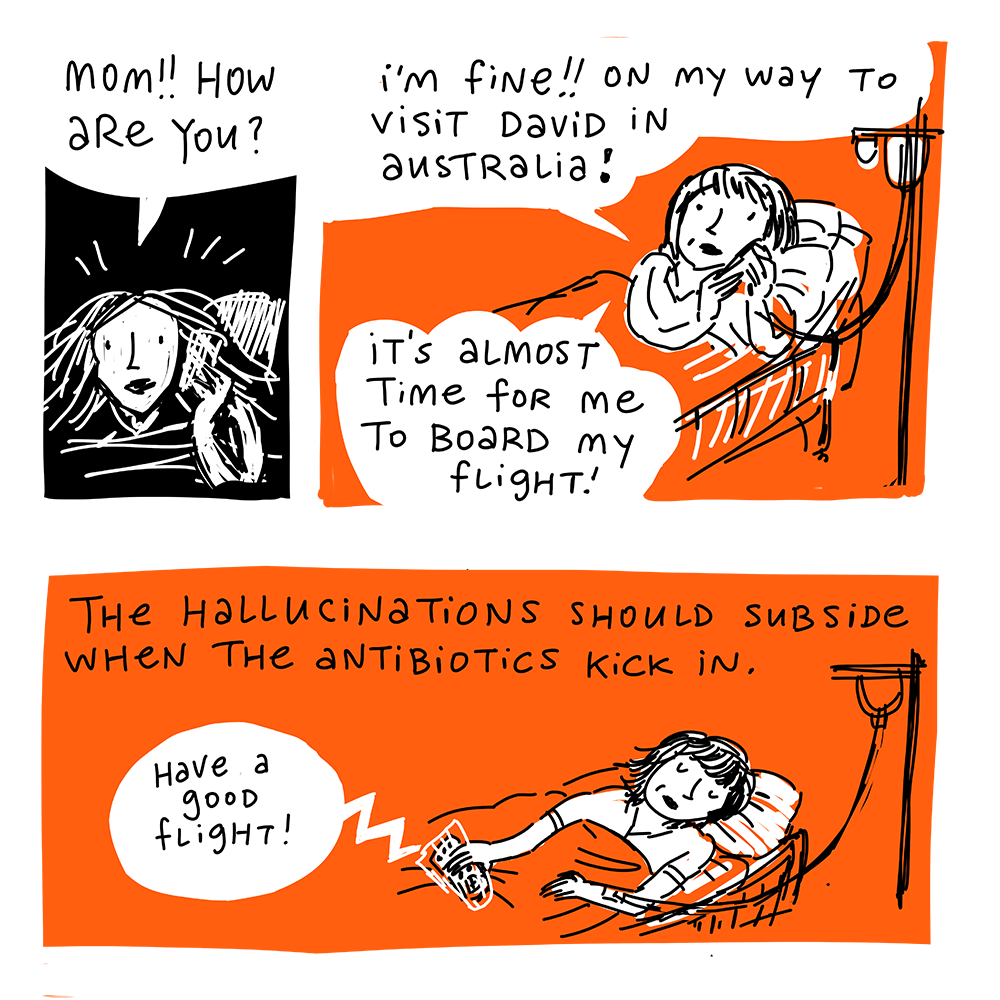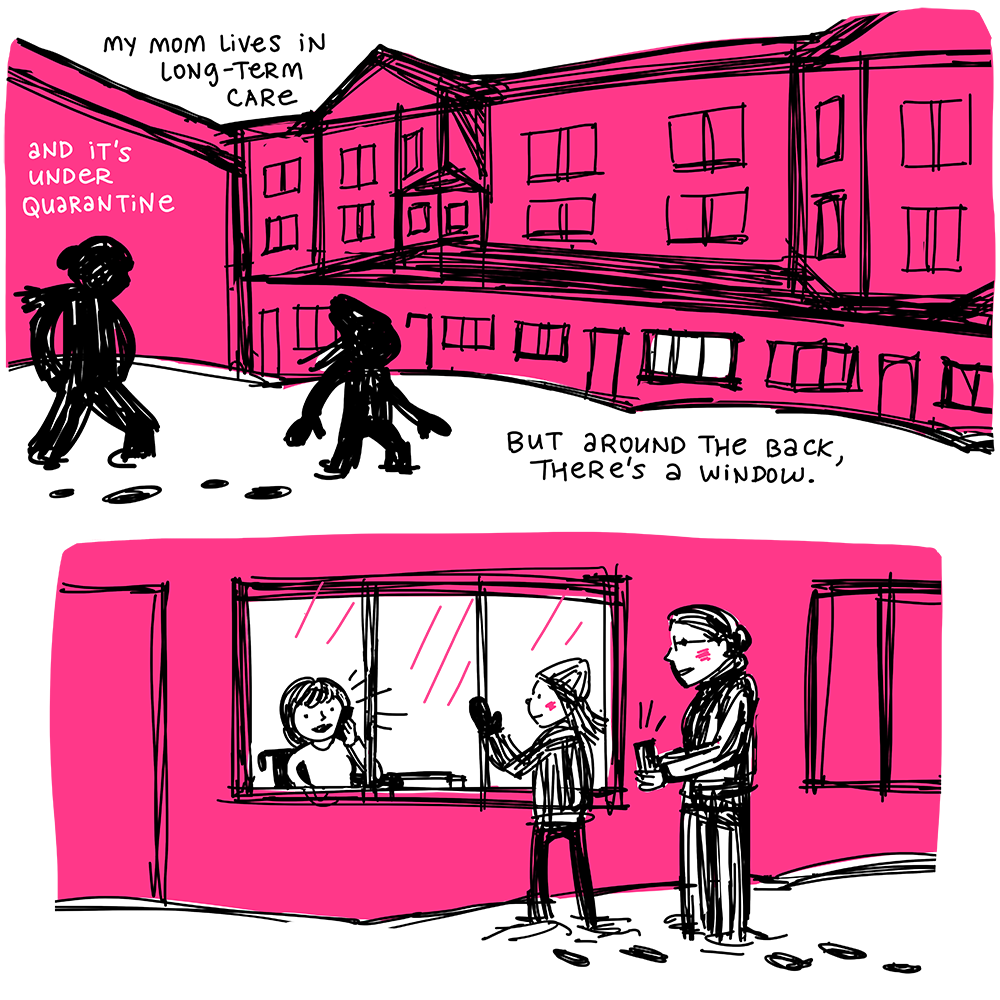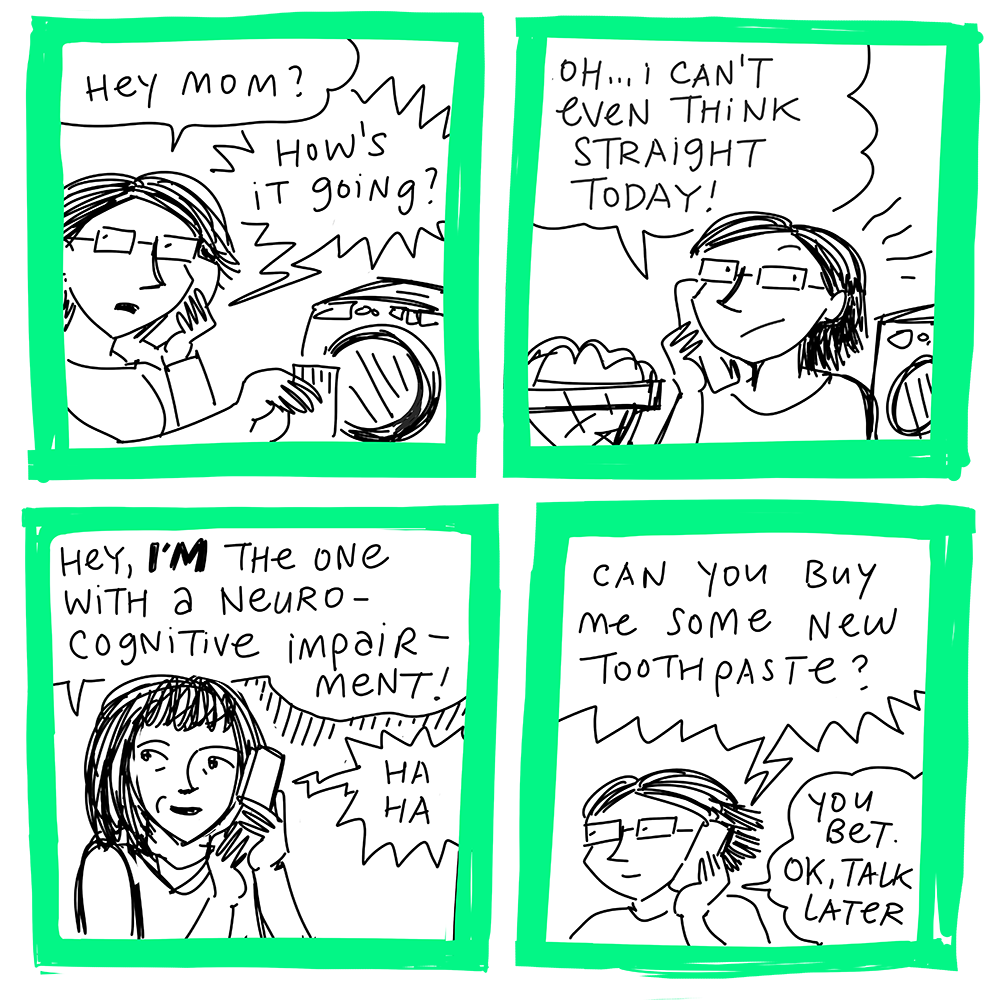|
In 2021, I gave a talk at TEDxYYC about how
graphic medicine helped me in my role as a caregiver for my mom. You can see the talk here! And if you'd like to find out more about some of things that were mentioned in the talk, here are some links (below): Here are the comics my mom and I wrote together for a magazine called Dementia Connections. My mom self-published
a book of poems and short stories inspired by life with Parkinson's! Find out more about it (and order the book) on my mom's website! Scroll down to the bottom of this page for a bit more about my mom's story.
|
What is Graphic Medicine?
In 2007, doctor and cartoonist Ian Williams coined the term "graphic medicine" to denote the role that comics can play in healthcare. Since then, graphic medicine has come to refer to
'The intersection between the medium of comics and the discourse of healthcare.’ It's a growing movement! Take a look at www.graphicmedicine.org to find out more about how scholars, health care practitioners, artists, and everyday folks are exploring graphic medicine! There's a conference happening in the summer of 2024! Graphic Medicine Animated Explainer Video: Work in Progress
Graphic medicine - using pictures to help with health care communication - has helped me in my role as a health care advocate. I thought it might be a good idea to make an accessible explainer video about this subject, so that others could learn about graphic medicine, too! I applied for a grant from Calgary Arts Development, and my proposal was successful. I've been working with my friend Eric Dyck, an illustrator and educator based in Lethbridge, Alberta, to make the video. It's still a work in progress! The low-quality audio track is just a placeholder, to provide a general idea of the story. And we have only finished the first 3.5 minutes - we need to add one more minute of animation to get to the end of the story. But hopefully this sneak preview will give you an idea of what we're working on!
How I found out about Graphic Medicine!
Graphic medicine & autobiographical comics
Even before I learned the term "graphic medicine," I'd been operating at the intersection of comics and health care for a long time.
Graphic medicine & graphic recording
But I hadn't just learned about graphic medicine by making comics. In my work as a graphic recorder, I've taken notes at countless health-care-related events. Some of those notes are here on this website.
|
Graphic medicine and my mom!
|
Most of all, I learned about graphic medicine from my experiences as a caregiver for my mom Jocelyn.
My mom was diagnosed with Parkinson's in 2002, but it was a long time before her care needs evolved to a point where she needed help. Here's part of a comic I wrote in 2013 about my search for a home with a suite for my mom. You can read the rest of the comic (and a lot more about intergenerational housing) here. My mom lived with me for about six months before moving to an independent living residence nearby. About two years later, she moved to long-term care. It was during those transition years, as her care needs changed a lot, that our TEDxYYC story happened: it was a time when communication with health care practitioners was so important. |
Hospital pictures
When my mom was spending a lot of time at the hospital, I drew pictures of her. It helped me to pass the time, and to take a step back from all the stress and work of a family caregiver. Later I realized that the pictures also documented the story. For example, in my TEDx talk, I mention that she was leaning to the left. In one of the sketches here, you can see that she's leaning on the arm of her wheelchair, which has been propped up by a pillow.
During this time, I also drew pictures that I hoped would help the hospital staff to be aware of her particular needs, during times when I couldn't be there and when she wasn't able to communicate for herself. |
|
Here's a comic I wrote on new year's eve, 2001, about talking with my mom on the phone. This was a habit we got back into, during the 2020 pandemic. Our phone calls became a big part of how we stayed connected. Not only that, they became a way for us to talk about writing stories.
Here are some links to some of the comics I wrote for The Sprawl after being inspired by conversations with my mom. (Click on the images to read the stories.)
At the beginning of 2022, Jocelyn is doing fine. We have had lots of in-person visits since those comics were written! We still talk on the phone, too. To learn more about her, take a look at her website. |



